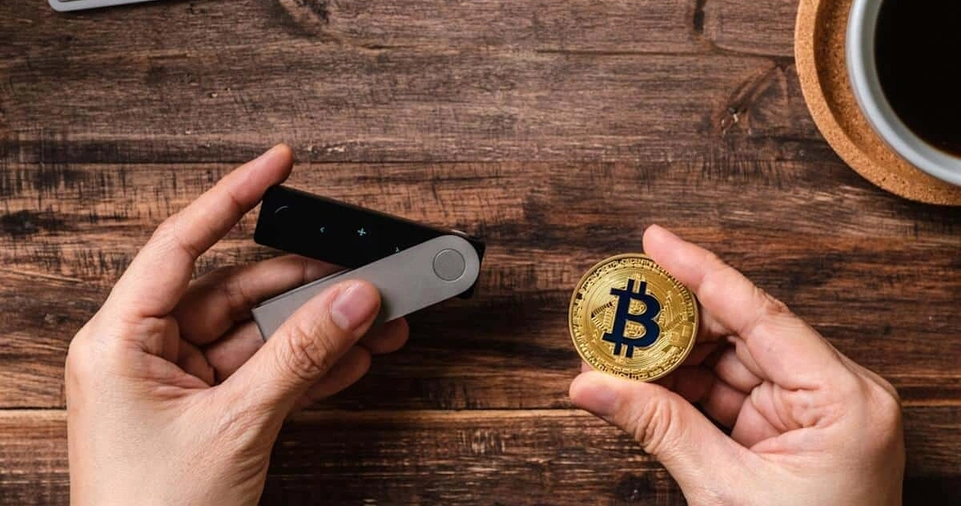In the world of cryptocurrency, security is paramount. With the increasing number of hacking incidents and cyber threats, safeguarding your digital assets is crucial.
One of the most secure ways to store cryptocurrency is by using a cold wallet. Unlike hot wallets, which remain connected to the internet, cold wallets store your private keys offline, making them less susceptible to hacks.
This guide will walk you through setting up a cold wallet for offline crypto storage, covering the different types of cold wallets, best practices, and security considerations.
What is a Cold Wallet?
A cold wallet is a cryptocurrency wallet that remains disconnected from the internet, reducing the risk of unauthorized access, hacking, or malware attacks.
Cold wallets come in different forms, including hardware wallets, paper wallets, and air-gapped computers.
Types of Cold Wallets
| Type | Description | Pros | Cons |
|---|---|---|---|
| Hardware Wallets | Physical devices that store private keys securely offline | Highly secure, user-friendly, supports multiple cryptos | Costs money, needs backups |
| Paper Wallets | Physical printouts of private and public keys | Free, fully offline, secure if handled properly | Can be lost or damaged, requires manual transactions |
| Air-Gapped Computers | A dedicated computer disconnected from the internet, used to generate and sign transactions | Extremely secure, customizable | Requires technical knowledge, expensive |
ALSO READ: How to Use Technical Analysis Tools for Crypto Trading?
Steps to Set Up a Cold Wallet

Choose the Right Type of Cold Wallet
Before setting up a cold wallet, decide which type best suits your needs. If you want user-friendliness, a hardware wallet is the best option. If you prefer cost-effectiveness, a paper wallet might be ideal.
Purchase or Create Your Cold Wallet
- For hardware wallets: Buy from a reputable manufacturer like Ledger, Trezor, or Coldcard.
- For paper wallets: Use an offline computer to generate keys and print them securely.
- For an air-gapped computer: Set up a separate device with a secure operating system that never connects to the internet.
Generate a New Wallet Address
For hardware and software-based cold wallets, follow the manufacturer’s instructions to generate a wallet address and private key securely.
For paper wallets:
- Use an open-source tool like BitAddress (downloaded and run offline) to generate a new wallet.
- Print the wallet details securely.
Back Up Your Private Keys Securely
- Store your private keys in multiple secure locations.
- Use fireproof and waterproof storage options.
- Never store private keys digitally on an internet-connected device.
Test the Wallet with a Small Transaction
Before transferring large amounts, send a small amount of cryptocurrency to the wallet address and try a test withdrawal.
Store Your Cold Wallet Safely
- Hardware wallets: Keep in a safe or secure location.
- Paper wallets: Laminate and store in a safe or deposit box.
- Air-gapped computers: Keep them in a secure location, ensuring no internet connectivity.
Security Considerations
Best Practices
- Always buy hardware wallets from official sources.
- Generate private keys in an offline environment.
- Use multi-signature setups for additional security.
- Avoid entering private keys on internet-connected devices.
Risks and How to Mitigate Them
| Risk | Mitigation Strategy |
|---|---|
| Loss of private keys | Store backups in multiple secure locations |
| Physical theft | Use safes, deposit boxes, and disguised storage |
| Hardware failure | Maintain duplicate backups and use recovery phrases |
| Phishing attacks | Never share private keys; verify official websites |
ALSO READ: How to Buy and Sell NFTs on Popular Marketplaces?
Comparison: Cold Wallet vs. Hot Wallet

| Feature | Cold Wallet | Hot Wallet |
|---|---|---|
| Security | High | Moderate to low |
| Accessibility | Low | High |
| Cost | Medium to high (hardware wallets) | Free to low |
| Risk of Hacks | Minimal | High |
| Best Use Case | Long-term storage | Frequent transactions |
Advanced Cold Storage Techniques
Multi-Signature Cold Wallets
- Requires multiple private keys to authorize a transaction.
- Useful for businesses or high-value storage.
Shamir’s Secret Sharing
- Splits a private key into multiple shares.
- Requires a certain number of shares to reconstruct the key.
Decentralized Storage Solutions
- Uses multiple geographic locations for enhanced security.
- Reduces risks of single points of failure.
ALSO READ: How to Earn Passive Income Through DeFi Staking and Yield Farming?
Conclusion
Setting up a cold wallet is an essential step for anyone serious about cryptocurrency security.
By keeping private keys offline, you reduce the risk of cyber threats and unauthorized access.
Whether you choose a hardware wallet, paper wallet, or air-gapped computer, following best practices ensures the safety of your digital assets.
Secure storage, proper backups, and periodic checks will help maintain long-term crypto security.
With growing security threats in the digital world, cold wallets remain a vital tool for protecting crypto investments.
If you are holding cryptocurrencies for the long term, investing in a cold wallet setup is one of the best decisions you can make.







